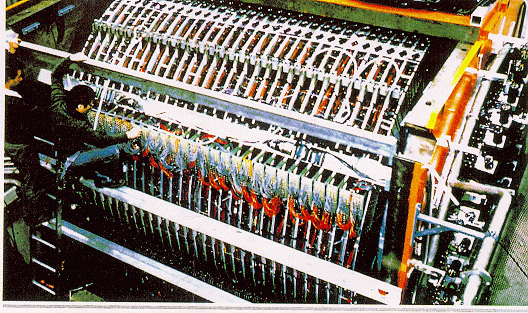
The JADE Lead-Glass Electromagnetic Shower Detector
In 1977 the JADE experiment was approved. To take the responsibility of the experiment, a new laboratory, the Laboratory of International Collaboration on Elementary Particle Physics (LICEPP), was started in Faculty of Science, University of Tokyo, with a term of seven years, and replaced HEPL.

The detectors were designed to cover large solid angles so that they should not miss any interesting events. The lead-glass electromagnetic shower detector, which LICEPP was in charge of, operated stably without losing its quality of performance. Together with the central tracking detector, it was indispensable in most of the physics analyses.
The 5 year operation of the experiment since 1979 resulted in the following important achievements:
Many physicists, who worked in the JADE experiment, later participated in the TRISTAN experiments at the KEK laboratory in Japan. It is generally believed that their experiences with JADE had partially contributed to the success of TRISTAN.